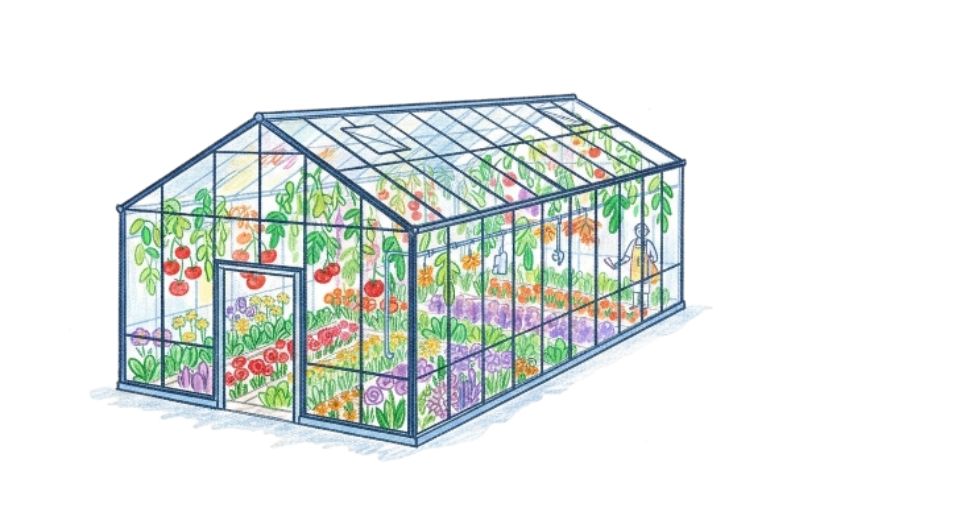
Sep 26, 2025

The global commercial greenhouse market according to Metastat Insight is a testament to the trend of how food, flowers, and high-value crops are being grown in response to today's challenges. Throughout the world, unstable weather conditions, scarce land to plow, and shifting consumer demands are redefining how agricultural production is being carried out. Controlled environments now allow crops to be grown regardless of season or soil type, providing a route to secure supply and improved utilization of resources. What was once niche investment several years ago now is mainstream as one solution to meet increasing food security demands and access high-quality products.
Unseasonable temperatures, droughts, and unpredictable rain affect crop yields and limit the reliability of open-field agriculture. Urbanisation has also reduced land suitable for arable use while simultaneously expanding the number of consumers with expectations for fresh, high-quality food throughout the year. Commercial greenhouses create a condition where growing conditions can be optimized, sheltering crops from the effect of environmental stress and bringing about enhanced productivity. It is one solution that is becoming more vital in resolving the tension brought about by declining land supply against growing consumption.
A business greenhouse is a controlled environment in which conditions like temperature, humidity, and light are manipulated in a delicately balanced harmony. This dexterity has the perfect cycles of growth irrespective of the external climatic conditions. Hydroponics, automation in irrigation, and extra lighting are employed in cutting-edge setups to achieve utmost efficacy with lesser resource consumption. In addition to providing secure harvests, these complexes allow to produce crops that would otherwise not be ideally suited to the climate of a region. The result is a secure, foreseeable supply chain that balances market demand and sustainability initiatives. Standout benefits include lower water usage, fewer chemicals used, and closer production to centers of consumption to reduce impacts of transportation activities. growth story and technological evolution. Adoption of greenhouses on a commercial scale has been rising incrementally but gradually, often starting in a limited way by farmers who want to enjoy flexibility with uncertainty in climate.
With the passage of time, the inclusion of cutting-edge technologies like climate management software, renewable energy, and highly efficient LED lights has broadened capabilities. From simple buildings with little automation, it has traveled a long distance to emerge as very advanced facilities for mass production.
Each innovation, ranging from energy-saving constructions to electronic monitoring, has cemented the status of such systems as being more than just protective covers but also productive investments for modern agriculture. regional and global trends Regional adoption levels vary, depending on domestic agricultural methods, economic condition, and consumer pattern. In advanced economies, investment goes into meeting consumer demand for premium fruits, vegetables, and flowers throughout the year. Territories with limited land area have utilized commercial greenhouses as an affordable method of increasing production without acres additional of land for agriculture.
Although this is so, expansion markets indicate all signs of growing at extremely high levels as they respond to urbanization and the necessity of minimizing dependence on imports.
The flexibility of greenhouse technology has made it survive in climatic conditions that vary from arid areas to more latitudinal locations, thus creating its generality. challenges and opportunities Adoption still faces challenges. Costs of construction and operation can be substantial, necessitating rigorous financial planning and institutional investor financing in many cases. Energy usage in highly controlled applications can have the potential to be a problem, especially where renewable penetration is low. Competitive forces also arise as producers balance investment and conventional practice. But challenges are outpaced by opportunity.
Sustained innovation in automation, energy efficiency, and material science is making facilities affordable to more growers while rendering them sustainable. Collaborations with technology firms and alignment with sustainability efforts offer other avenues for growth. Furthermore, the growing demand for domestic foods offers business models not previously viable decades past.
Greenhouses for commerce converge some of the most intriguing issues of the time. They provide a physical answer to food security demands, providing climate-controlled production in distance from environmental disturbance. They are compatible with sustainability principles in that they cut transport mileage and save natural resources. They also extend digital revolution, providing space for data-driven systems for farmers to make real-time choices. Global commercial greenhouse market analyzed by Metastat Insight shows how the production on farms is being transformed, providing an efficient, scalable means of balancing rising demand with supply. As they grow and become more developed, their impact on the food chain, on the use of resources, and on consumers' access will grow increasingly important as forces behind the future of the farming industry.
Drop us an email at:
Call us on:
+1 5186502376
+91 73850 57479